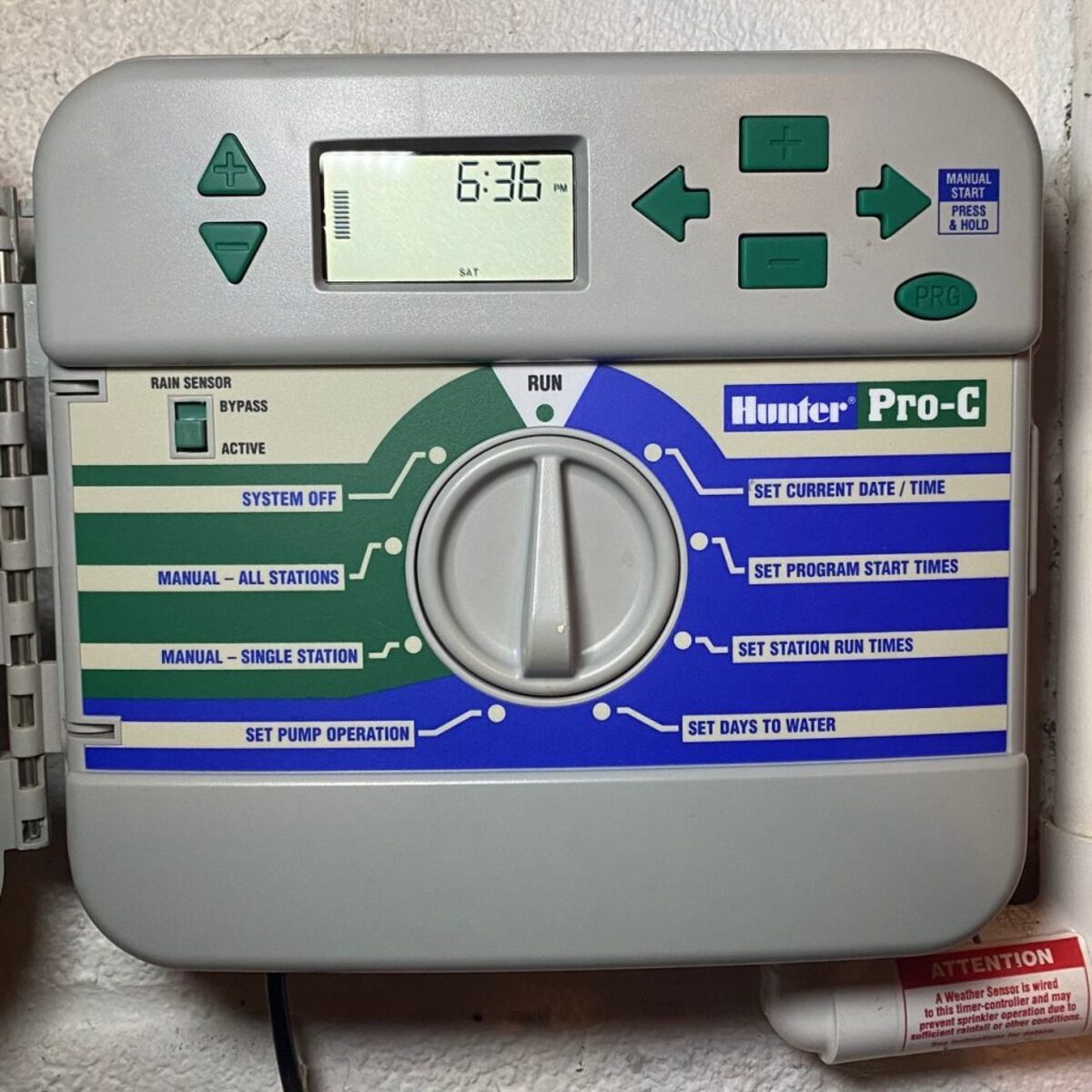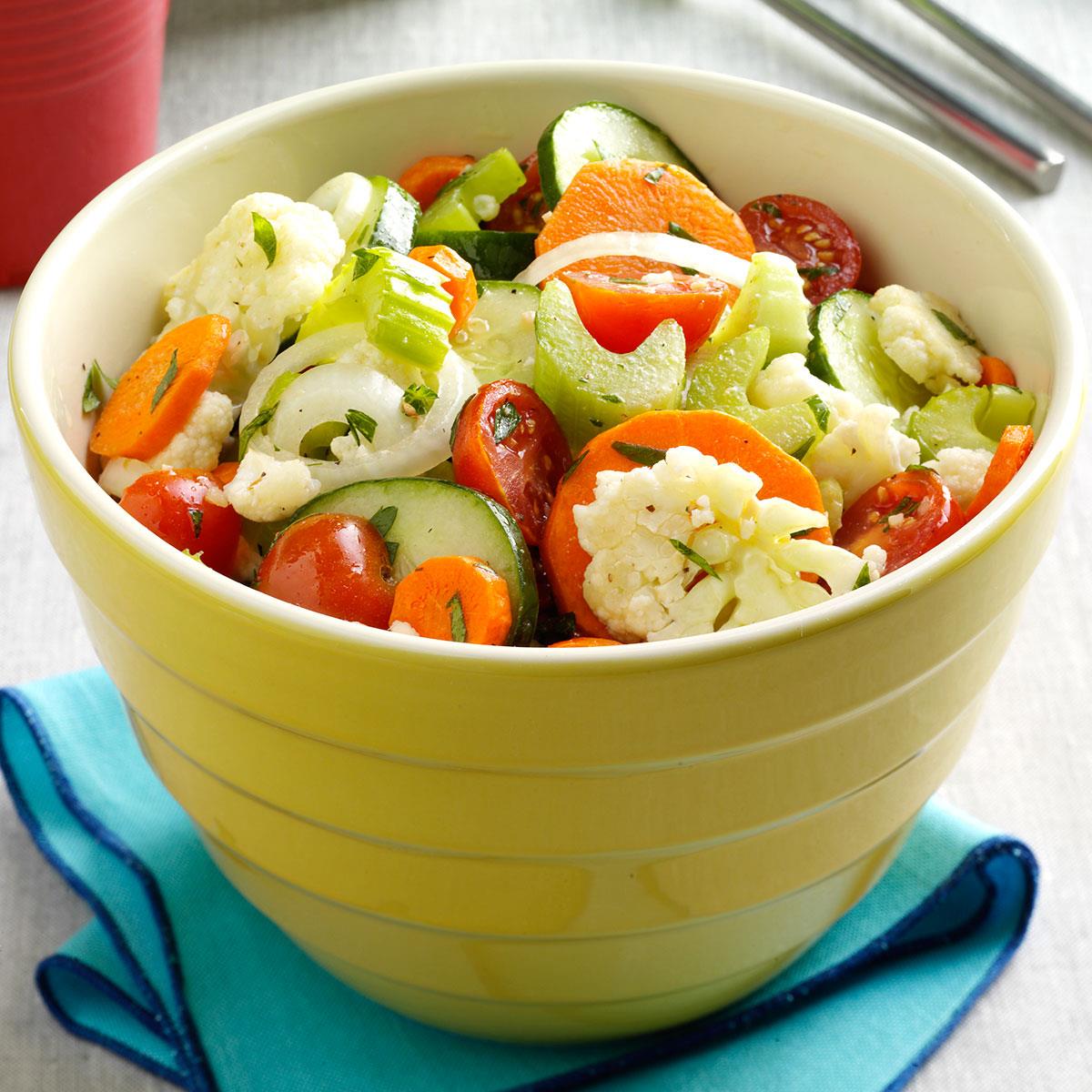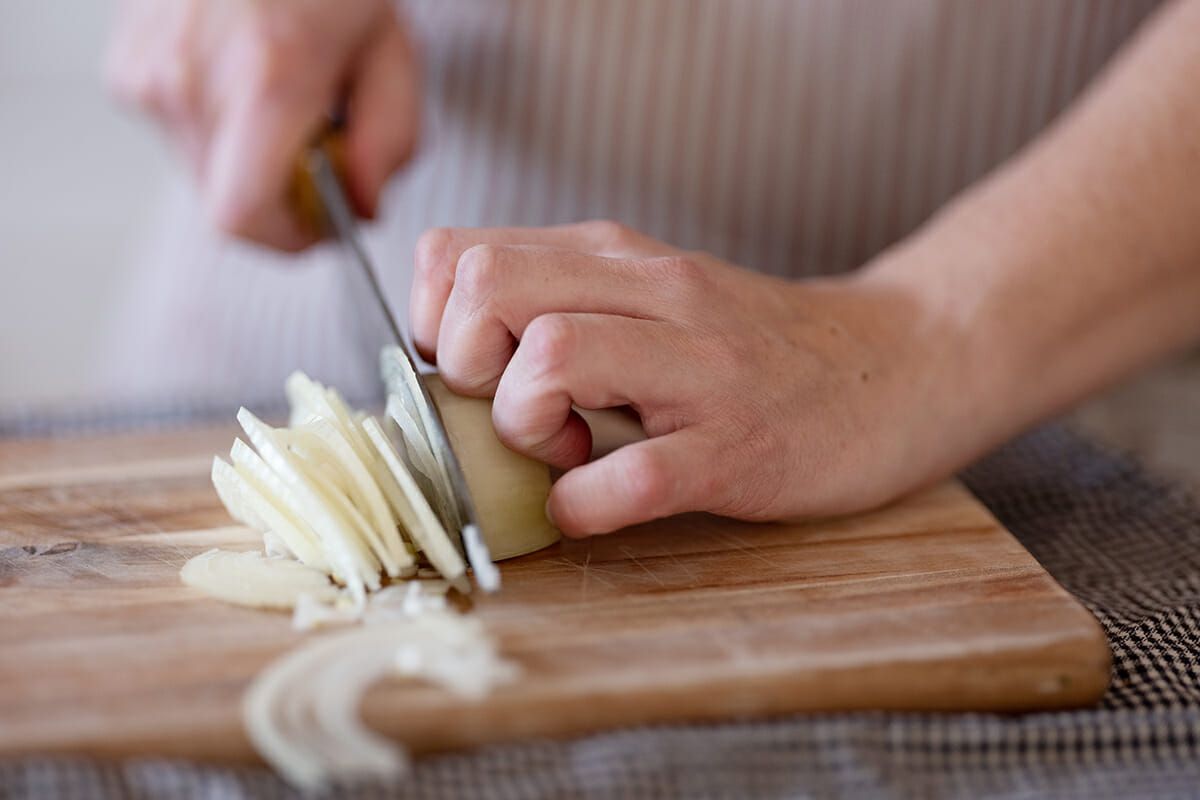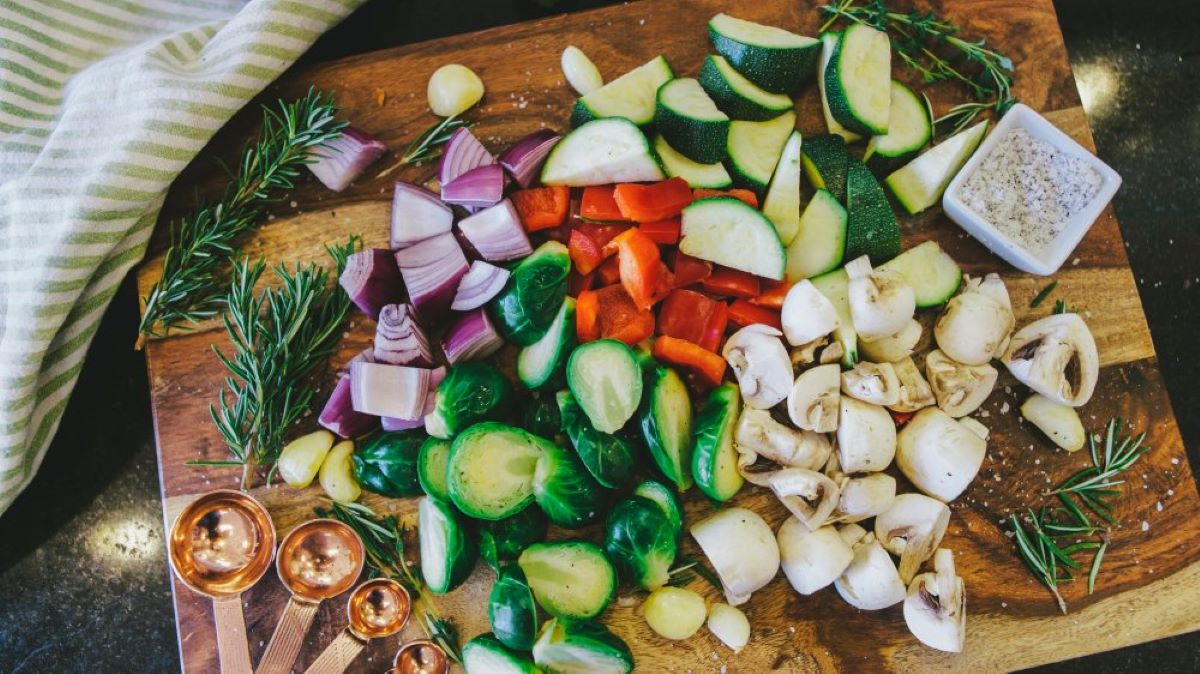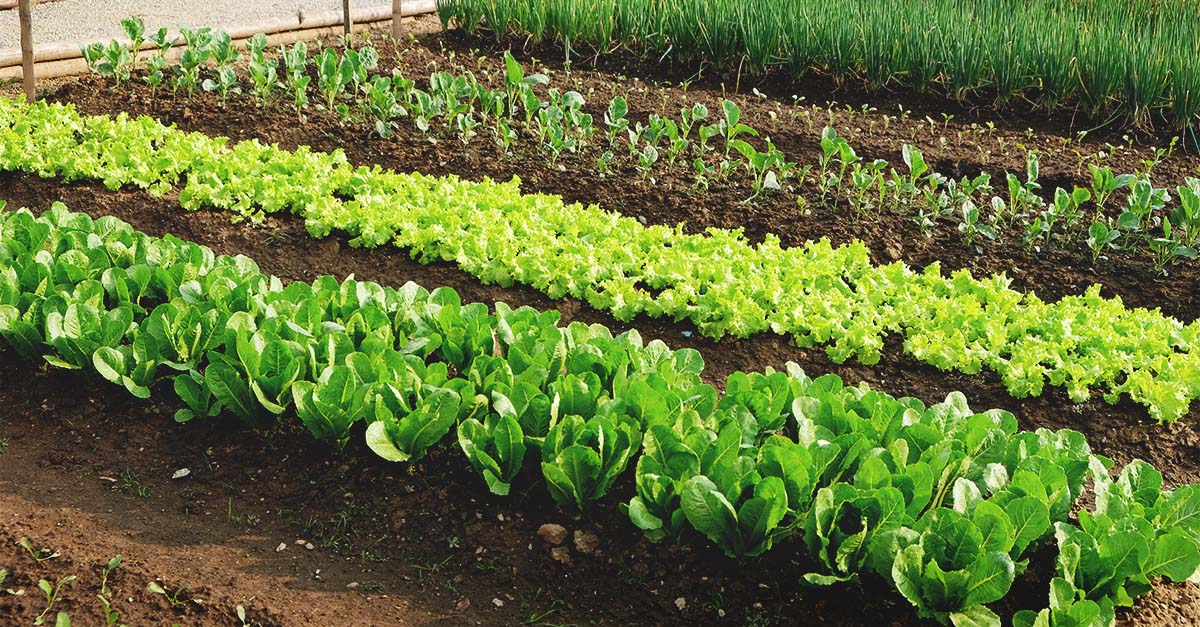Home>Gardening News and Trends>Latest News>How To Sauté Vegetables


Latest News
How To Sauté Vegetables
Modified: January 22, 2024
Learn the latest news on how to sauté vegetables and create delicious and healthy dishes with our step-by-step guide. Master the art of sautéing with our expert tips and techniques.
(Many of the links in this article redirect to a specific reviewed product. Your purchase of these products through affiliate links helps to generate commission for Chicagolandgardening.com, at no extra cost. Learn more)
Table of Contents
Introduction
Sautéed vegetables are a delicious and nutritious way to add a burst of flavor to any meal. Whether you’re a seasoned chef or a cooking novice, mastering the art of sautéing vegetables can take your culinary skills to the next level. From vibrant colors to irresistible aromas, sautéed vegetables offer a plethora of benefits for both your taste buds and your health.
In this article, we’ll explore the ins and outs of sautéing vegetables, from selecting the right vegetables to achieving the perfect texture and flavor. Whether you’re looking to elevate a simple weeknight dinner or impress guests with a gourmet side dish, sautéed vegetables are a versatile and crowd-pleasing option.
Not only do sautéed vegetables enhance the taste and aesthetic appeal of a dish, but they also provide numerous health benefits. Vegetables are packed with essential vitamins, minerals, and antioxidants that support overall well-being. The sautéing process helps to retain these nutrients while adding depth and complexity to the flavor profile.
Now, let’s delve into the world of sautéed vegetables and discover how to create flavorful and nutritious dishes that will delight your palate.
Benefits of Sautéed Vegetables
Sautéed vegetables offer a myriad of benefits for your health, taste buds, and overall well-being. Let’s explore some of the key advantages of incorporating sautéed vegetables into your diet.
- Nutritional Powerhouses: Sautéed vegetables are a nutritional powerhouse, providing a wide array of vitamins, minerals, and antioxidants. These essential nutrients help strengthen your immune system, support healthy digestion, and promote optimal organ function.
- Delicious Flavor: Sautéing vegetables brings out their natural sweetness and intensifies their flavors. As the vegetables sizzle in the pan, their sugars caramelize, resulting in a rich and savory taste. The combination of fresh vegetables and the Maillard browning reaction creates a delightful depth of flavor.
- Textural Variety: Sautéing vegetables adds a pleasing contrast of textures to your dishes. The quick cooking method results in a tender yet slightly crunchy texture, ensuring a satisfying bite in every mouthful.
- Quick and Simple: Sautéing vegetables is a quick and straightforward cooking technique that requires minimal time and effort. Whether you’re preparing a weeknight dinner or entertaining guests, sautéing vegetables allows you to whip up a flavorful and nutritious side dish in no time.
- Versatility: Sautéed vegetables are incredibly versatile and can be used in various dishes. From stir-fries and pasta toppings to fajitas and grain bowls, sautéed vegetables can elevate the flavor and nutritional profile of countless recipes. The possibilities for culinary exploration are endless.
With their nutritional value, delectable flavors, delightful textures, and versatility, sautéed vegetables are a fantastic addition to any meal. Incorporating them into your diet can help enhance your overall health while adding vibrant colors and irresistible tastes to your plate.
Choosing the Right Vegetables
When it comes to sautéing vegetables, choosing the right ones is key to achieving a flavorful and satisfying dish. Here are some factors to consider when selecting vegetables for sautéing:
- Freshness: Opt for fresh, vibrant vegetables that are firm and crisp. Look for vegetables with bright colors and no signs of wilting or browning.
- Seasonality: Choose vegetables that are in season for the best flavor and quality. Seasonal vegetables are often more affordable and readily available.
- Texture: Consider a variety of textures to create an interesting medley of sautéed vegetables. Mix and match softer vegetables like mushrooms or zucchini with crisp veggies like bell peppers or snap peas.
- Flavor Profile: Think about the flavor profiles you want to incorporate into your dish. Some vegetables, such as onions and garlic, add a savory and aromatic base, while others, like carrots and bell peppers, bring a hint of sweetness.
- Color Palette: Create visually appealing sautéed vegetables by choosing a range of colors. Incorporating a mix of green, red, yellow, and orange vegetables not only adds aesthetic appeal but also provides a diverse range of nutrients.
Some popular vegetables that work well for sautéing include bell peppers, zucchini, mushrooms, onions, garlic, broccoli, carrots, asparagus, and green beans. However, don’t limit yourself to these options. Explore your local farmer’s market or grocery store to discover new vegetables to sauté.
Remember, experimentation is key when it comes to sautéing vegetables. Feel free to mix and match different vegetables to create unique flavor combinations and textures. The goal is to create a harmonious blend of flavors and colors that will elevate your sautéed vegetable dishes to new heights.
Preparing the Vegetables
Before you begin sautéing your vegetables, it’s important to properly prepare them to ensure even cooking and optimal flavor. Here are some steps to follow when preparing your vegetables for sautéing:
- Wash the vegetables: Start by washing your vegetables thoroughly under running water to remove any dirt or debris. Pat them dry with a clean kitchen towel or paper towel.
- Trim and cut: Remove any tough stems, leaves, or roots from the vegetables. Then, proceed to cut them into uniform-sized pieces to ensure even cooking. Slicing the vegetables into thin, bite-sized pieces will allow them to cook quickly and evenly.
- Pick the right pan: Choose a wide, flat-bottomed pan or skillet for sautéing. Make sure it has enough room to accommodate all the vegetables without overcrowding. This will help to promote proper heat distribution and prevent steaming instead of sautéing.
- Preheat the pan: Preheat the pan over medium-high heat before adding the vegetables. It’s important to allow the pan to get hot to create that sizzling sound when the vegetables hit the surface, ensuring a quick and flavorful sauté.
- Add oil or butter: To prevent the vegetables from sticking to the pan and to add flavor, add a small amount of oil or butter to the preheated pan. Olive oil, vegetable oil, or clarified butter are good options. Use just enough to lightly coat the bottom of the pan.
- Consider seasoning: Depending on your taste preferences, you can season the vegetables before adding them to the pan. Sprinkle them with salt, pepper, or your favorite herbs and spices to enhance the flavor. Alternatively, you can wait to season them during the cooking process.
By following these preparation steps, you’ll ensure that your vegetables are ready to be sautéed to perfection. Taking the time to properly prepare your vegetables will result in a beautiful presentation and a dish that is both flavorful and satisfying.
Steps to Sauté Vegetables
Sautéing vegetables is a straightforward process that involves quick cooking over high heat to create a delicious and tender result. Follow these simple steps to sauté your vegetables to perfection:
- Heat the pan: Place a wide, flat-bottomed pan or skillet on the stovetop over medium-high heat. Allow the pan to heat up for a few minutes.
- Add oil or butter: Once the pan is hot, add a small amount of oil or butter to the pan. Swirl it around to coat the bottom evenly.
- Add the vegetables: Carefully add the prepared vegetables to the pan. Make sure not to overcrowd the pan to ensure even cooking.
- Sauté the vegetables: Use a spatula or tongs to toss and stir the vegetables continuously. This will help distribute the heat evenly and prevent them from burning. Keep sautéing for about 5-7 minutes or until the vegetables are crisp-tender.
- Adjust the heat: If you notice the vegetables are browning too quickly, reduce the heat slightly. If they are cooking too slowly, increase the heat slightly to maintain a steady sauté.
- Season to taste: Once the vegetables are cooked to your desired tenderness, season them with salt, pepper, and any other herbs or spices of your choice. Toss the vegetables gently to evenly distribute the seasoning.
- Remove from heat: Turn off the heat and transfer the sautéed vegetables to a serving dish. Be careful as the pan will still be hot.
Remember, the key to successful sautéed vegetables is to keep them moving in the pan and to avoid overcooking. Aim for crisp-tender results that retain the vibrant colors of the vegetables.
Following these steps will ensure that you achieve perfectly sautéed vegetables every time. Get creative and experiment with different combinations of vegetables and seasonings to create your own signature sautéed vegetable dish.
Tips for Perfectly Sautéed Vegetables
While sautéing vegetables is a relatively simple cooking technique, a few tips can help you achieve perfectly cooked and flavorful results. Follow these tips to take your sautéed vegetables to the next level:
- Use high heat: Sautéing is all about quick cooking over high heat. Ensure your pan is hot before adding the vegetables to create that signature sizzle and achieve a tender-crisp texture.
- Don’t overcrowd the pan: Give your vegetables enough room to spread out in the pan. Overcrowding can lead to steaming instead of sautéing, resulting in soggy vegetables rather than a delicious caramelized exterior.
- Keep the vegetables moving: Continuously toss and stir the vegetables in the pan to promote even cooking and prevent them from sticking or burning. Use a spatula or tongs to easily flip the vegetables and ensure they cook evenly.
- Cut vegetables into uniform pieces: Cut your vegetables into similar-sized pieces to ensure they cook at the same rate. This will help you achieve a consistent texture and prevent some pieces from becoming overcooked.
- Season at the right time: For the best flavor, season your vegetables with salt, pepper, and any other desired herbs or spices during or immediately after cooking. This will allow the flavors to permeate the vegetables without over-seasoning.
- Add delicate vegetables last: If you’re using a combination of vegetables with different cooking times, add the ones that cook more quickly towards the end. Delicate vegetables like spinach or cherry tomatoes can be added in the final minutes to prevent them from wilting or bursting.
- Experiment with different oils: While olive oil is a popular choice for sautéing vegetables, don’t be afraid to try different oils like sesame oil, coconut oil, or avocado oil. Each oil adds its own unique flavor profile.
- Finish with a squeeze of citrus: For a burst of freshness and added brightness, squeeze a bit of lemon or lime juice over the sautéed vegetables just before serving. This adds a tangy and vibrant element to the dish.
By following these tips, you’ll be able to elevate your sautéed vegetables to new heights. With practice and experimentation, you’ll develop your own techniques and flavors to create mouthwatering sautéed vegetable dishes that will impress your family and friends.
Flavor Variations for Sautéed Vegetables
One of the great things about sautéing vegetables is the endless possibilities for flavor combinations. By mixing and matching different herbs, spices, and seasonings, you can create a wide array of delicious and unique sautéed vegetable dishes. Here are some flavor variations to inspire your culinary creativity:
- Garlic and Herb: Sauté your vegetables with minced garlic and a medley of fresh herbs like thyme, rosemary, and parsley. This combination adds a fragrant and savory aroma to the dish.
- Asian-Inspired: Create an Asian flair by sautéing your vegetables with soy sauce, ginger, and a touch of sesame oil. Add a sprinkle of sesame seeds for some extra crunch.
- Mediterranean Delight: Toss your sautéed vegetables with a mixture of olive oil, lemon juice, oregano, and a sprinkle of feta cheese. This combination brings a refreshing and tangy Mediterranean twist.
- Spicy Fiesta: Add a kick to your sautéed vegetables with a spicy twist. Use chili powder, cumin, and a pinch of cayenne pepper for a flavorful and fiery experience.
- Herb-Infused Butter: Sauté your vegetables in a mixture of butter and fresh herbs like thyme, sage, or basil. This combination adds a rich and decadent flavor to the dish.
- Sweet and Savory: Combine the sweetness of honey or maple syrup with savory ingredients like balsamic vinegar and Dijon mustard. This blend creates a delightful balance of flavors in your sautéed vegetables.
- Curry Sensation: Spice things up by adding curry powder, turmeric, and a hint of coconut milk to your sautéed vegetables. This combination brings a complex and aromatic curry flavor to the dish.
- Citrus Zest: Infuse your sautéed vegetables with the freshness of citrus by adding lemon or lime zest. This adds a bright and tangy element that complements the natural flavors of the vegetables.
Feel free to experiment with different flavor combinations to create your own signature sautéed vegetable dishes. Don’t be afraid to think outside the box and try new ingredients or spices that you enjoy. The possibilities are endless, and with a bit of creativity, you can take your sautéed vegetables to a whole new level of deliciousness.
Serving and Pairing Sautéed Vegetables
Sautéed vegetables are a versatile and flavorful addition to any meal, whether they’re served as a side dish or incorporated into a main course. Here are some ideas for serving and pairing sautéed vegetables:
- Side Dish: Serve sautéed vegetables as a delicious and nutritious side dish alongside grilled chicken, steak, or fish. They add a burst of flavor and color to the plate and complement the main protein.
- Pasta Toppings: Toss sautéed vegetables with cooked pasta for a quick and satisfying meal. Add some grated cheese, herbs, and a drizzle of olive oil for a simple yet flavorful pasta dish.
- Grain Bowls: Use sautéed vegetables as a topping for grain bowls or Buddha bowls. Combine them with cooked quinoa, brown rice, or couscous, and add a protein of your choice for a balanced and wholesome meal.
- Stir-Fries: Sautéed vegetables are a perfect addition to stir-fries. Combine them with your choice of protein, such as chicken, tofu, or shrimp, and toss with soy sauce, ginger, and garlic for a quick and flavorful Asian-inspired dish.
- Fajitas or Tacos: Sautéed vegetables can be a delicious filling for fajitas or tacos. Add some grilled peppers and onions, along with your favorite protein, and serve with warm tortillas, guacamole, and salsa for a satisfying Mexican-inspired meal.
- Sandwich Toppings: Use sautéed vegetables as a topping for sandwiches or wraps. They add a burst of flavor and a delightful texture to any sandwich combination, whether it’s a grilled veggie wrap or a chicken sandwich.
- Complement to Roasted Meats: Sautéed vegetables pair beautifully with roasted meats. Serve them alongside roasted chicken, pork tenderloin, or beef roast for a complete and well-rounded meal.
- Buddha Bowls: Create a nourishing and visually striking Buddha bowl by layering sautéed vegetables with cooked grains, leafy greens, avocado, and a drizzle of your favorite dressing or sauce.
When it comes to serving sautéed vegetables, the possibilities are endless. Get creative and pair them with your favorite proteins, grains, or other dishes that you enjoy. Don’t be afraid to experiment and find unique flavor combinations that satisfy your taste buds.
Remember to consider the flavors and textures of the sautéed vegetables when deciding on the pairing. Whether you’re looking to enhance the flavors of a dish or add a nutritious component to a meal, sautéed vegetables are a versatile and delicious choice.
Conclusion
Sautéed vegetables are a fantastic way to add flavor, color, and nutrition to your meals. With their quick cooking time and endless flavor variations, sautéed vegetables offer a versatile and delicious option for any cooking enthusiast. Whether you’re a beginner in the kitchen or a seasoned chef, mastering the art of sautéing vegetables can take your culinary skills to new heights.
From the benefits of sautéed vegetables, such as their nutritional value and vibrant flavors, to choosing the right vegetables and preparing them properly, we’ve explored the essential steps to create perfectly sautéed vegetables. By following the steps, you can achieve tender-crisp textures, delicious flavors, and visually appealing dishes.
Remember to get creative with your flavor variations, experimenting with different herbs, spices, and seasonings to create unique and mouthwatering sautéed vegetable dishes. Pair them with your favorite proteins, grains, or use them as toppings in various recipes to elevate your meals.
So, grab your favorite vegetables, heat up that pan, and start sautéing your way to flavorful, nutritious, and visually stunning dishes. With a little practice and a lot of culinary inspiration, you’ll become a sautéing expert in no time. Enjoy the process, the aromas, and the satisfaction of creating delicious sautéed vegetable dishes that will impress everyone at your table.
